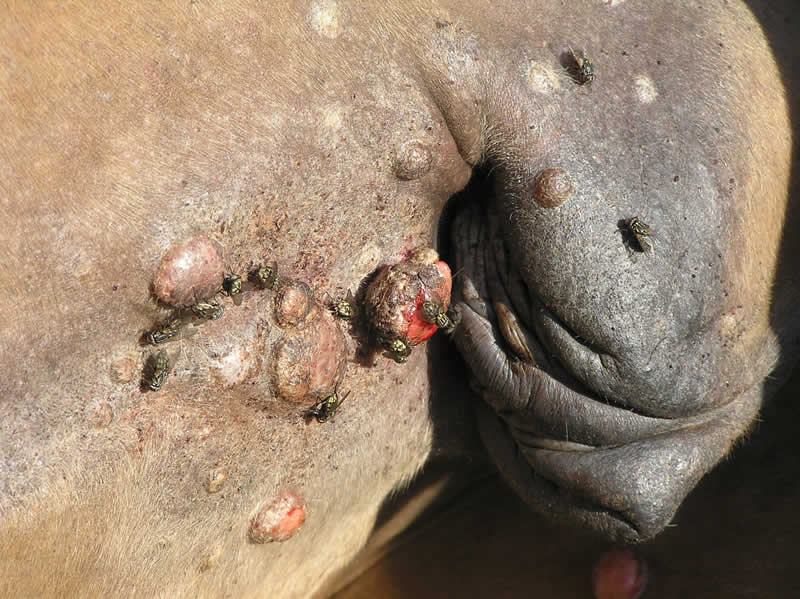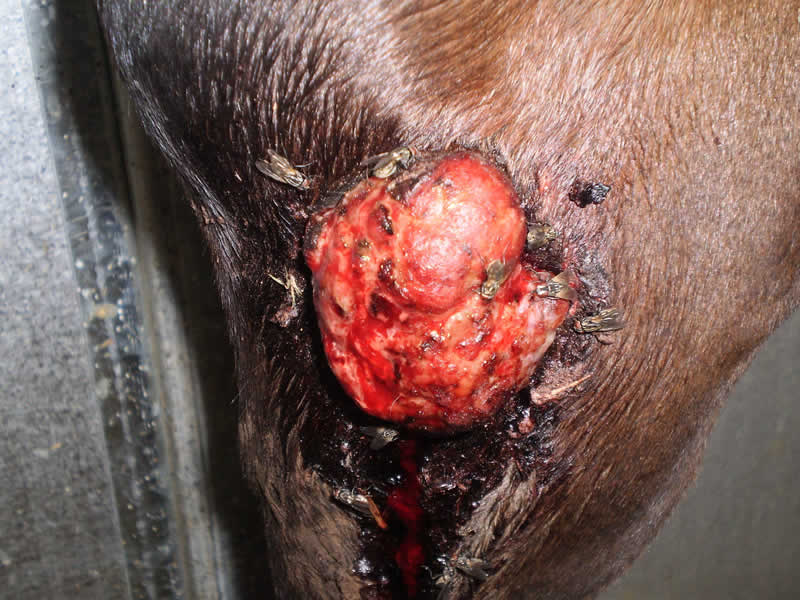However, we would strongly advise that it is much better to treat a horse with sarcoid in Spring or early Summer before the fly season starts because we do know that flies are capable of transmitting sarcoid from site to site and from horse to horse from any open sarcoid.
Our premise is really that the more lesions a horse has over the summer, the more it will get and of course the implication from that is “the fewer they have, the fewer they get”.
Sarcoids multiply over the Summer and grow over the Winter. Whilst it is obviously not as black-and-white as this, because all tumours start with one cell and only become apparent when they are of a visible size or a palpable or detectable size, it means that the individual seeded sarcoids take root over the Summer months and then take between 6 and 9 months to develop into a visible tumour. We are therefore always one year behind.
Sarcoids act as a very strong attractant to flies and they will prefer to feed on sarcoid than anywhere else at all. Of course this does not apply to the biting flies – they feed on thin hairless skin such as on the thighs, the eyelids and the axillary/armpit regions.
When a biting fly leaves a small wound, the flies that have fed on a sarcoid elsewhere will be easily attracted to this site and they then deposit the sarcoid factor – whatever that is – in the site where it may or may not produce a sarcoid next year.
In a way, the sarcoid acts as a McDonald’s for flies – in the way teenagers flock to McDonald’s, flies flock to sarcoid where the food is available 24/7 in plentiful quantity! Just look at these photos to see what me mean!
We also know that flies feeding on active sarcoid cause significant exacerbation by inducing secondary change, including infections, fly maggot development and so on – if they result in ulceration, they result in inflammation, and inflammation results in exacerbation.
The counterargument to treatment during the summer fly season of course is that the treated site is then open for fly attack.
We believe that is much less dangerous because you have access to it and you can prevent fly attack on a healing site. Furthermore, during the treatment, any fly that lands anywhere near this treated site is going to die very quickly as a consequence of contact with our AW5 sarcoid cream. No fly can survive that!
Remember that open sarcoids on a horse over the summer can be transmitted both across the horse to other sites or to other horses in contact with it. The potential for spread to other horses is a much more serious implication – if a horse is left outside with open sarcoid over the summer, it would be very difficult for owners to rule out the possibility that the affected horse resulted in transmission of sarcoid to an uninfected co-grazing horse.
The long and short of our advice is that sarcoids must be treated as early as possible, and preferably before the fly season starts.
Many cases will only be presented when the flies are already attacking them and that is not great – but it is still important to deal with every lesion as early as they are detected. It is a completely normal cancer philosophy!
Great information. My horse had a bad one two years ago which was treated with Liverpool cream. Treatment started around May (if I recall correctly). The results were fantastic, barely a scar and certainly not visible.





